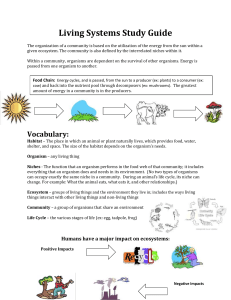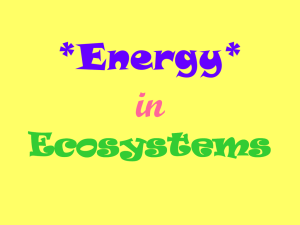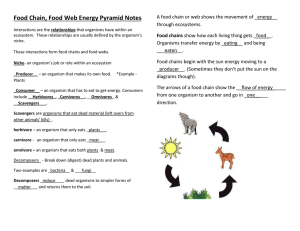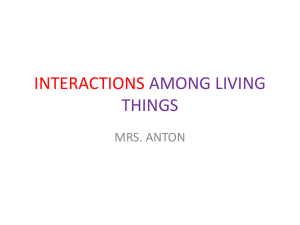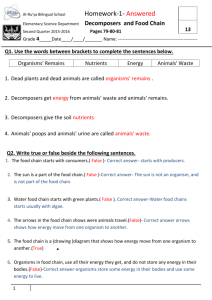ecosystem_vocabulary_review
advertisement
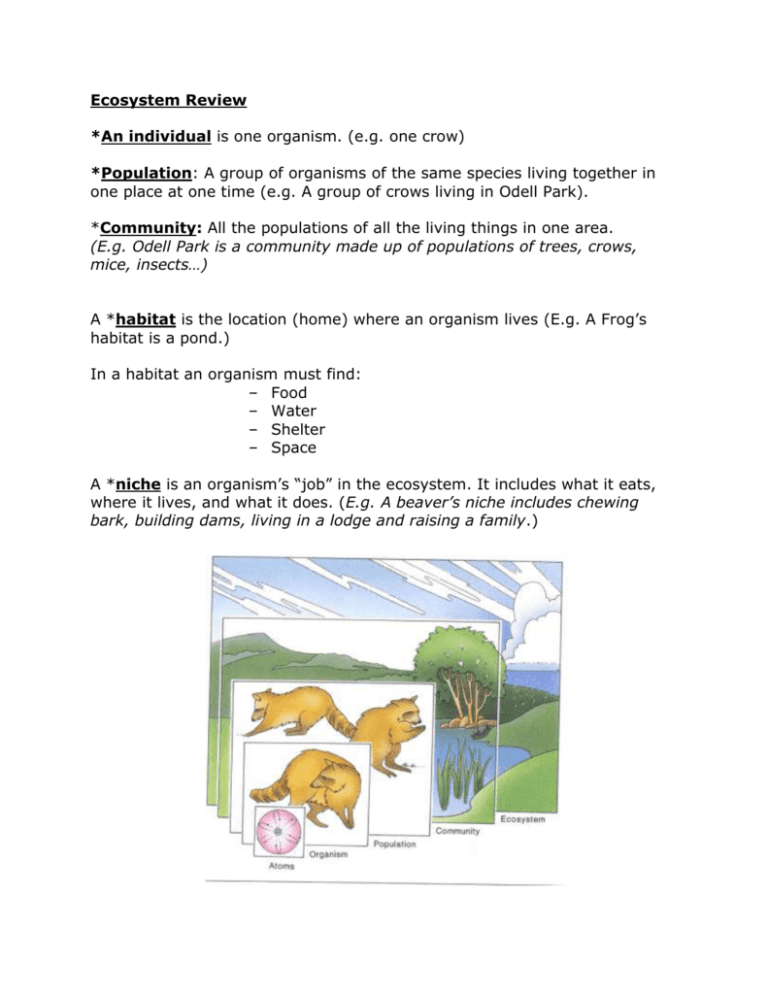
Ecosystem Review *An individual is one organism. (e.g. one crow) *Population: A group of organisms of the same species living together in one place at one time (e.g. A group of crows living in Odell Park). *Community: All the populations of all the living things in one area. (E.g. Odell Park is a community made up of populations of trees, crows, mice, insects…) A *habitat is the location (home) where an organism lives (E.g. A Frog’s habitat is a pond.) In a habitat an organism must find: – Food – Water – Shelter – Space A *niche is an organism’s “job” in the ecosystem. It includes what it eats, where it lives, and what it does. (E.g. A beaver’s niche includes chewing bark, building dams, living in a lodge and raising a family.) Food Chain A *food chain is a model that shows how energy is transferred in an ecosystem when one organism eats another organism. All food chains start with the sun. All the energy in a food chain comes from the sun. Food Chain Components: Sun Producers Consumers Decomposers Examples of food chains: 1. Sun - Wheat - Grasshopper - Snake – Hawk *Producers are organisms that can make their own food (using sunlight, water, air, and nutrients). E.g. Green plants and algae *Consumers are organisms that must eat other organisms (plants or animals) for their food. They cannot produce their own food! *Decomposers are organisms that break-down the cells of dead material and recycle the nutrients back into the ecosystem. Eventually all food chains end in decomposers A *food web is a series of interconnected food chains.
